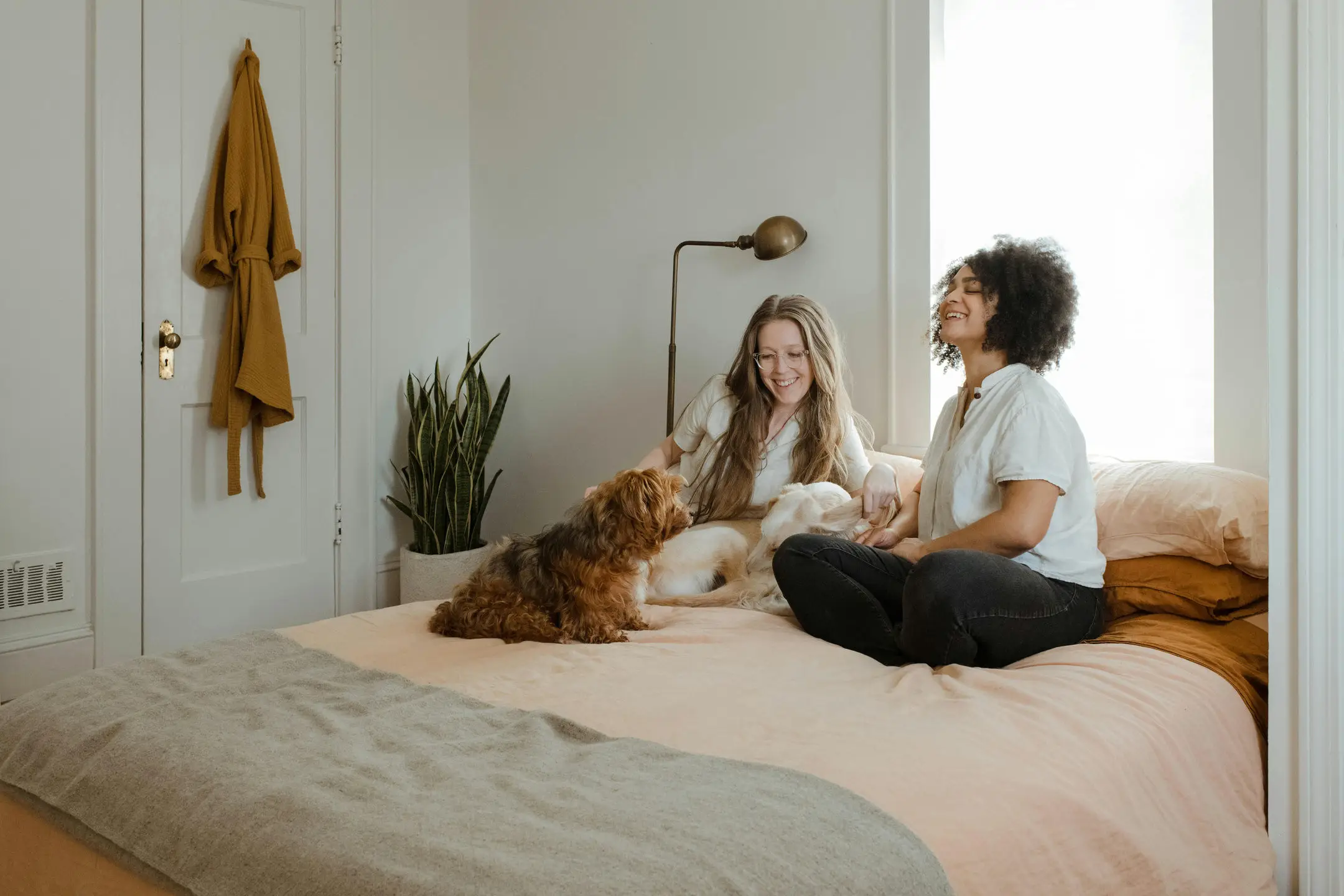
David Hicks is one of Australia's most sought after high-end interior designers. Over the past 25 years, Hicks has shaped the visual language and direction of luxury Australian interiors and become a leading taste-maker.

His instantly recognisable style, which he refers to as 'decorative minimalism', is a timeless combination of architectural form, symmetry, meticulous detailing, bold material contrasts, and sculpture-like furniture pieces and artworks that all come together to create spaces that defy trends. A David Hicks interior exudes sophistication and elegance - with a twist.
If you're planning a high-end renovation or development and have visions of transforming your home into a space that feels as good as it looks, these eight expert tips from Hicks offer the perfect guide.
1. True luxury is an experience, not a price point.
We often assume - incorrectly - that for something to be considered as luxury it has to cost the earth. For Hicks, price tags and bling are distractions:
"True luxury lies in the experience of a space rather than its cost or surface spectacle. It's that effortless sense you get when a room just works - when the planning is intelligent, the proportions are balanced, and every detail has been carefully resolved, Hicks says.
From this perspective, it's clear that luxury living is about depth and intention rather than surface-level add-ons.
2. Start with structure, not styling
Flow is something designers talk about a lot. Indoor-outdoor flow. Open plan living spaces to create flow. A seamless, flowing material colour palette to create a style narrative. For Hicks, creating flow through the structure of the rooms and how one space connects with the next are non-negotiable:
"Luxury is the absence of friction. If a space isn't well designed in its structure, no amount of styling will elevate it. How you move through the home, how materials transition, how the joinery integrates - all of that forms the foundation. Design must function beautifully to be truly luxurious."
Whether you're reworking an existing floorplan or starting with a blank slate, the architectural rhythm of the home should lead every design decision.

3. Living rooms should be layered, not loud
The living room is the most 'public' room in a home. Naturally, there is often a desire for the living room to be a show-stopping space that guests not only want to linger longer in, but will also admire and tell their friends about. However, Hicks cautions against giving into this urge:
"Sophistication in a living room comes from cohesion and restraint. The furniture must feel like it belongs, not just in style but in scale and placement. Every piece should contribute to the room's overall rhythm, not compete with it," Hicks Says.
"From there, it's about layering. I add depth through materiality and texture rather than colour alone, and I often introduce a single, unexpected element. These gestures add tension. They stop a room from feeling too predictable. But, remember that sophistication is not just what you choose - it's how precisely and thoughtfully it's realised."
There is a real craft to achieving a Hicks level living room that is an expression of your own personal style with a feeling of luxury. The key is, less is more.

4. Think of the dining room as a cinematic experience
Dining rooms are often visually static. A table, some chairs, perhaps placed atop a rug or positioned directly under a pendant light. You might think that there's little room for expressions of luxury in the dining room beyond the name of the designer who designed the table and chairs. Hicks suggests that by focusing on the envelope of the space, the dining room can become a cinematic experience:
"I focus on what's around and above the furniture - how the envelope of the room can be elevated to create a richer, more immersive experience," Hicks says.
"Lighting is key. I often use one or multiple sculptural pendants to create a sense of intimacy and visual weight. Ceiling and wall treatments, such as timber panelling, textured plaster, mirrors, wallpaper and upholstered panels can further enhance that sense of occasion. The floor should never be forgotten. A custom rug, patterned timber, or tiled inlay can help define the zone and add warmth."
When all this layering is done well - thoughtfully and intentionally - a dining room can be transformed into a cinematic experience capable of changing its mood to host a Sunday roast with family or a sophisticated dinner party.

5. Balance beauty and utility in the kitchen
So much more than a utilitarian space for food prep, the kitchen is the beating heart of a home. Flawless functionality and practical performance are essential, but, for Hicks, this doesn't mean it can't also be a beautiful centrepiece:
"Every household is different, so the planning must be tailored. Once the functional elements are locked in, I turn my attention to how the kitchen expresses itself visually and every detail is carefully considered," Hicks says.
"I'm known for using whole marble slabs - never fragmented or overly cut. Marble is inherently decorative. It doesn't need to be complicated, and to balance this I always try to include one element of surprise. A well-designed kitchen is quiet, confident, and timeless. It integrates into the home's architecture while still holding its own as a centrepiece."
Per square meter, the kitchen is also one of the most expensive rooms in the home. To create a kitchen that is a delight for years to come, it's essential to pour as much thought into the finishes as the function.

6. Treat the powder room like a stage set
From the centrepiece of the home to one of the smallest rooms that is often mistakenly overlooked - the powder room. The fact that powder rooms are usually 'just' for visitors makes them the ideal room to make a bold statement. For Hicks, "powder rooms are a gift."
"I approach them almost like a stage set. They're theatrical. You want to create a moment-something unexpected, moody, luxurious, and lighting is always key," Hicks says.
"I'm careful not to overdo it. It might be one strong gesture such as a mirrored wall, a full-height stone basin, a dramatic tapware finish. It should feel like a curated space, not a themed one."
For such a small room, an impressively designed powder room can be a truly memorable moment that guests talk about long after they leave. Not to mention, if you can't add a serious touch of drama, or have a little bit too much fun in a powder room, where can you?
7. Use materials to create emotional depth
For interior designers and design lovers, materials are everything. More than texture, colour and pattern, materials are about striking a balance between hard and soft, warm and cold, organic and industrial. To create a tone or mood, Hicks calls on materials to do the heavy lifting:
"I often start by identifying the tone or mood the client wants to create, and then build a palette of materials that support that," Hicks says.
"In formal areas, I might use velvet, silk, wallpaper, patinated metal, or detailed joinery - layered in a way that feels indulgent and sophisticated. In informal zones, it's about warmth and durability - timber, linen, terrazzo, brushed brass, stone. But even here, refinement matters. These materials are selected for their tactility, their tone, and how they age."
Essentially, the tactility, tone, and the way a material ages are the qualities that give a room and a home character. Without these elements you run the risk of your home feeling like a beautiful mausoleum. Beautiful, sure, but still a mausoleum.

8. Light like a designer, not an art gallery
We've all seen them. Modern luxury homes that look and feel like a white cube art gallery. Pristine, refined, striking architectural lines, and oh so bright and more than a little bit sterile and overexposed.. Hicks believes that lighting should be part of the architecture, enhancing the experience, not overpowering it:
"Lighting shapes everything. It defines the mood, highlights detail, and draws the eye. In entertaining spaces, I design lighting the same way I design the room: with layers," Hicks says.
"There's always a central focus - a pendant, chandelier or ceiling feature that sets the tone. Then I build around that. Each light source plays a role, whether it's ambient, accent or decorative. In living and dining rooms especially, you want the light to be soft and flattering and create warmth and shadow. I often reference candlelight in my approach - lighting that flickers, pools, and creates intimacy."

Bonus tip: Don't forget the entry
We all know that first impressions count. This goes for your home as well. For Hicks, the front-door itself is the most overlooked detail, despite the fact that it's the first opportunity to make an impression:

"The front door is the threshold between outside and in. It should feel substantial, intentional, and beautifully made. The way it opens, the weight of it, the material, the handle - all of these elements speak before you've even stepped inside," Hicks says.
"Beyond the door, it's the rhythm of the arrival space. The proportion, the sightline, the first touchpoint. Whether it's a piece of joinery, a staircase, or a material junction, these quiet gestures set the tone for everything that follows.
Luxury isn't always loud. Sometimes it's the things you feel before you even realise you've seen them."
VIEW LISTING: David Hicks is the interior designer behind the incredible penthouse suites at BLVD Melbourne Square.
This article was originally published from view.com.au and appears with permission.
Article written by Jessica Agoston - Cleary
Hero image: David Hicks materials Mathoura house Toorak. Photograph: Mark Roper


